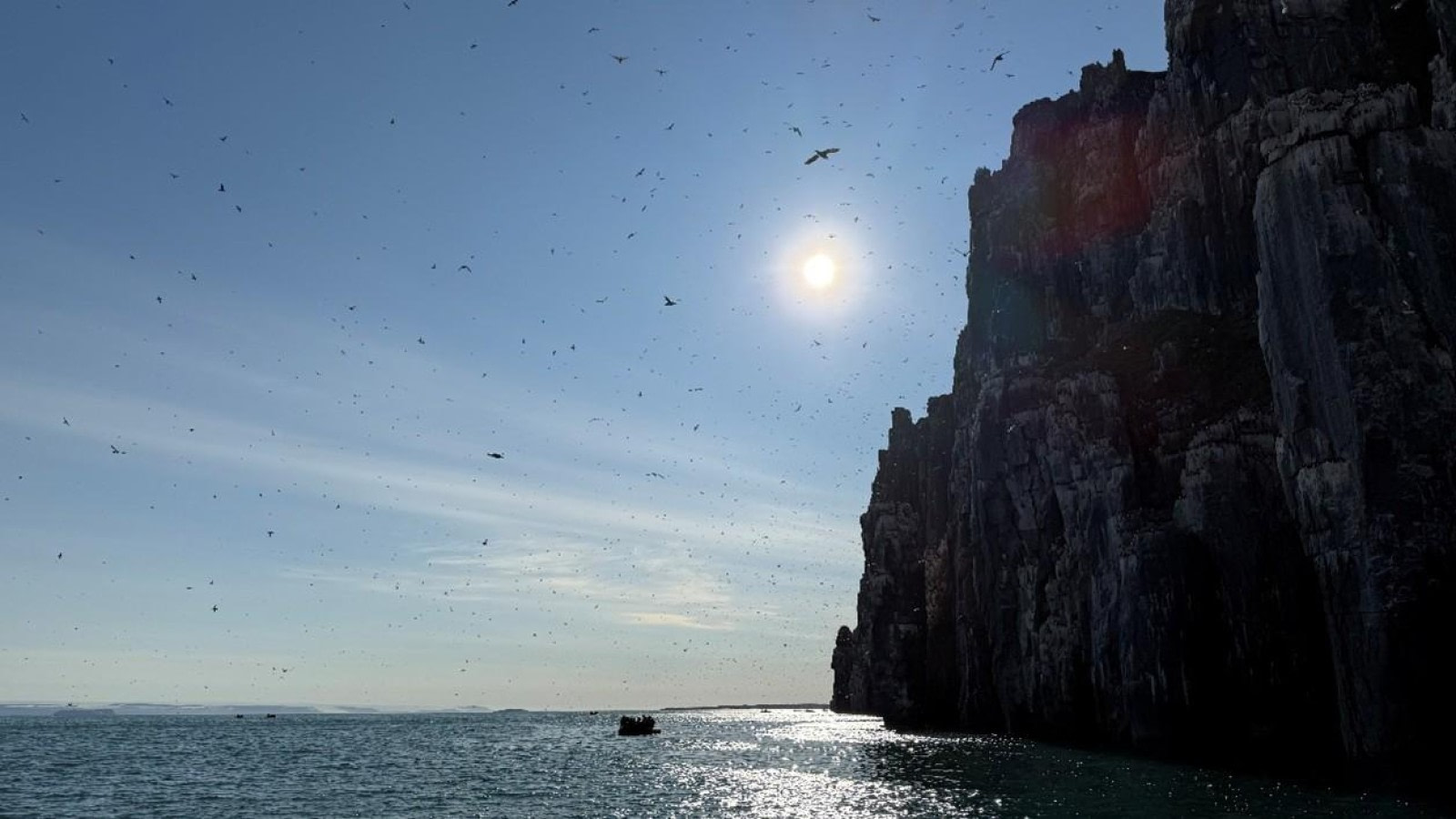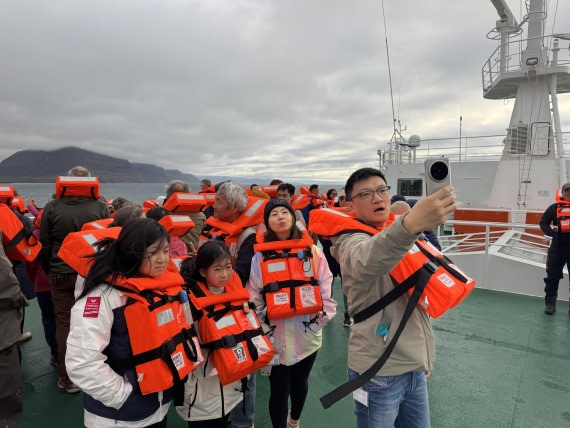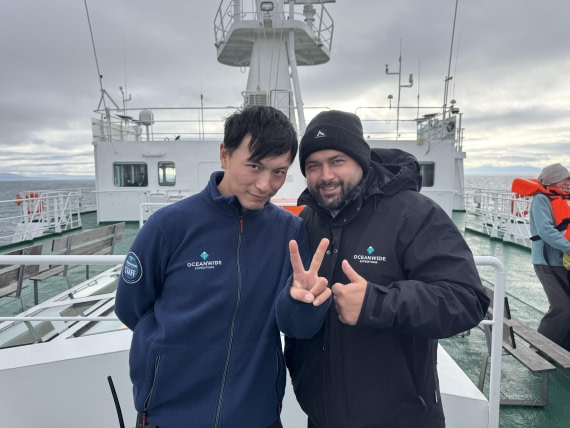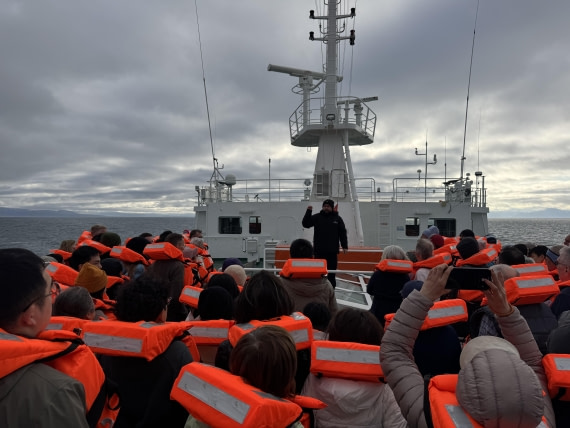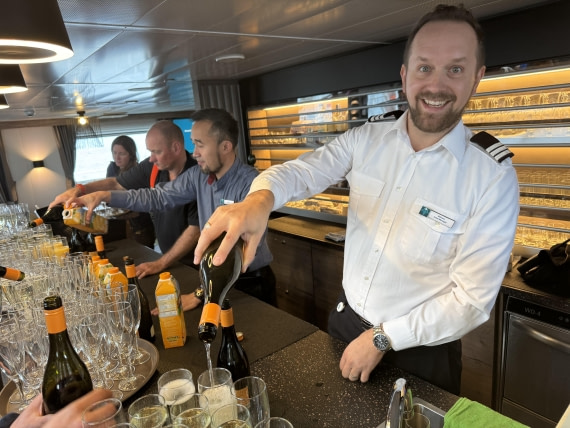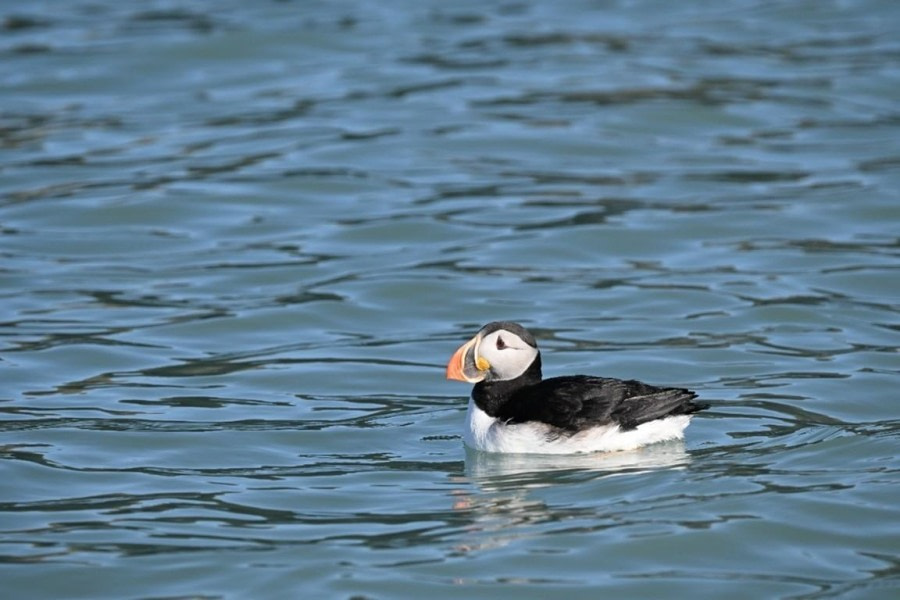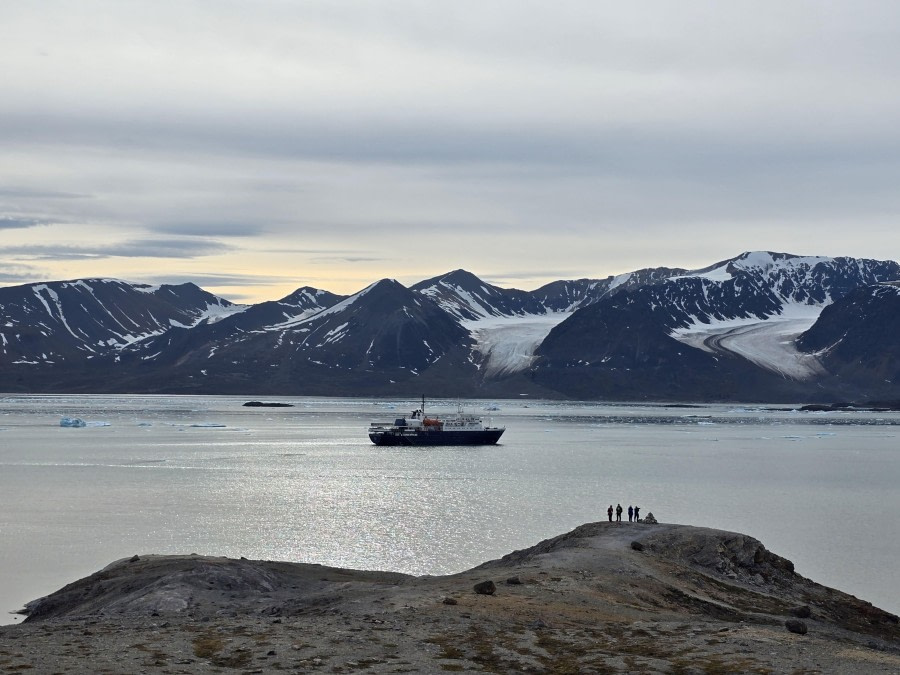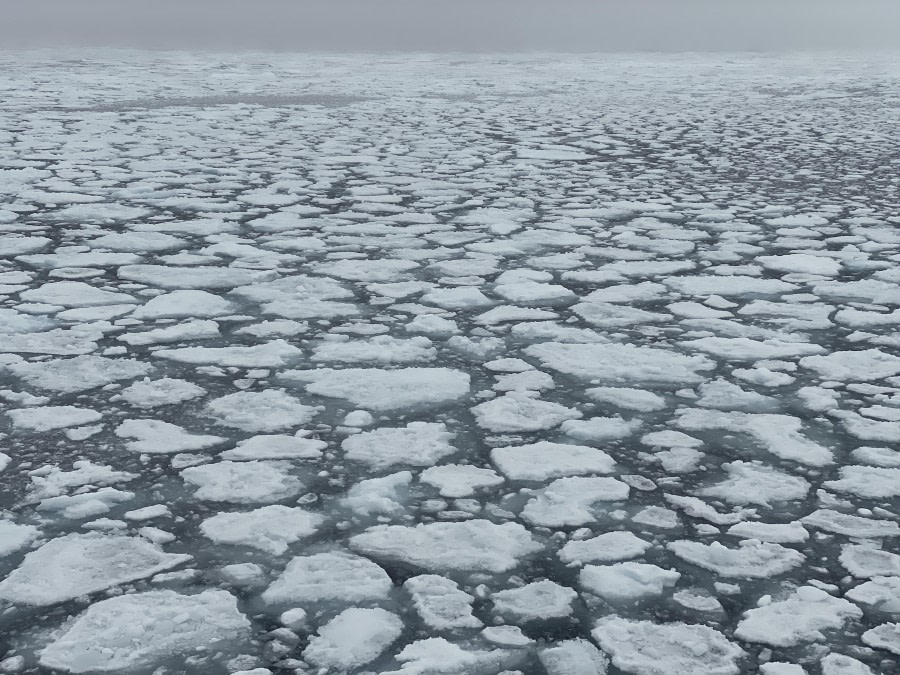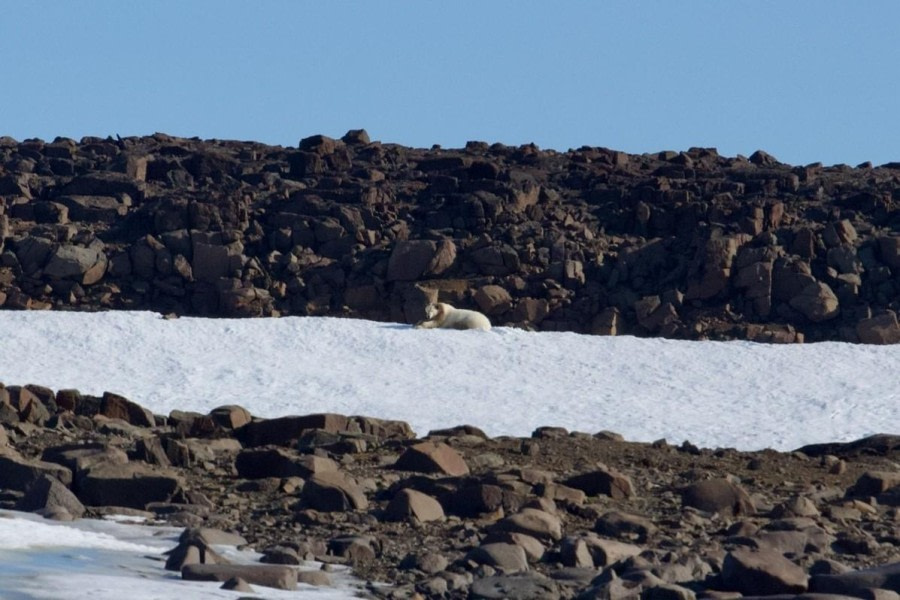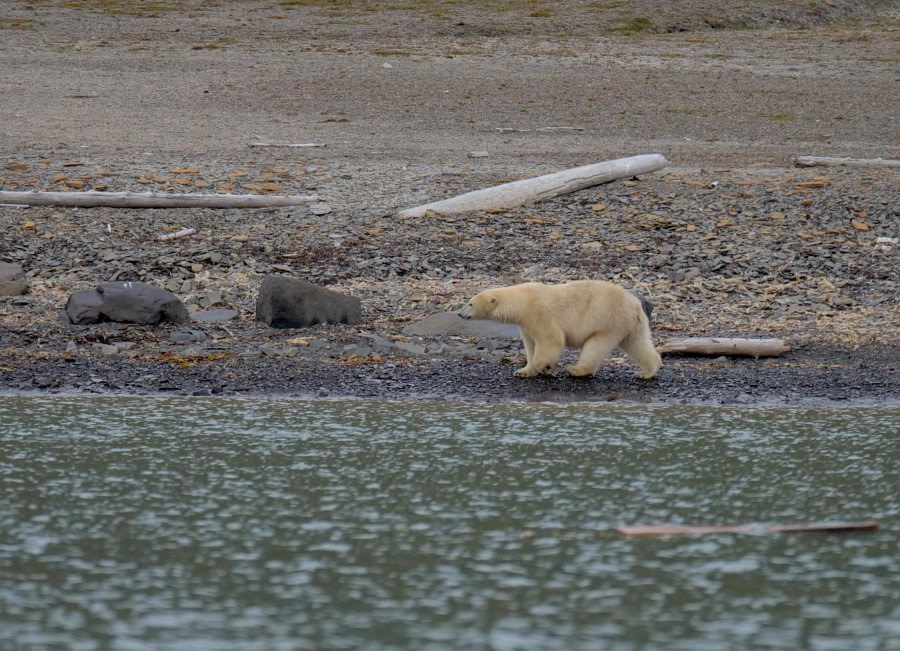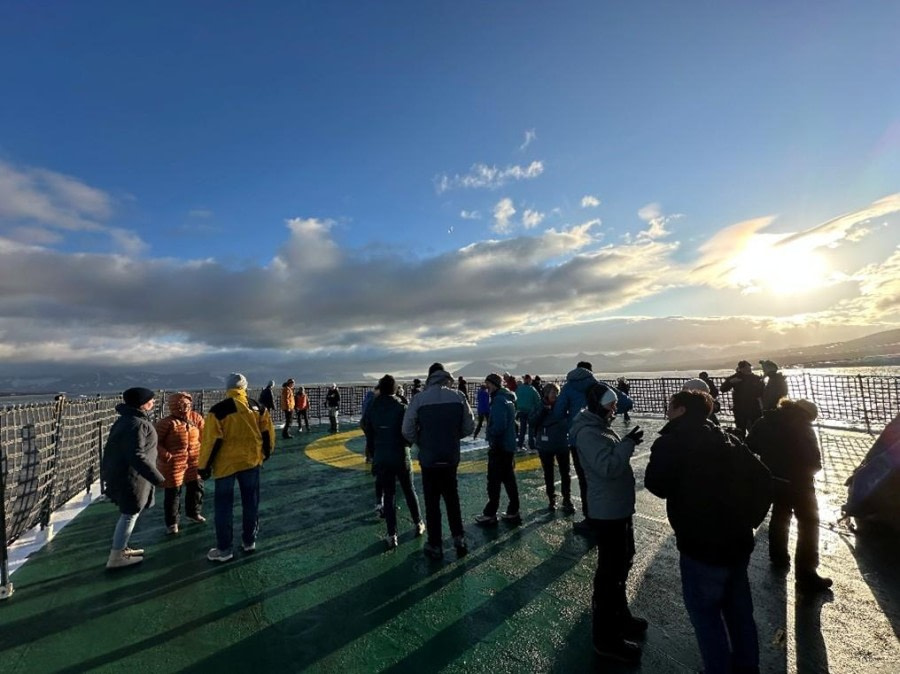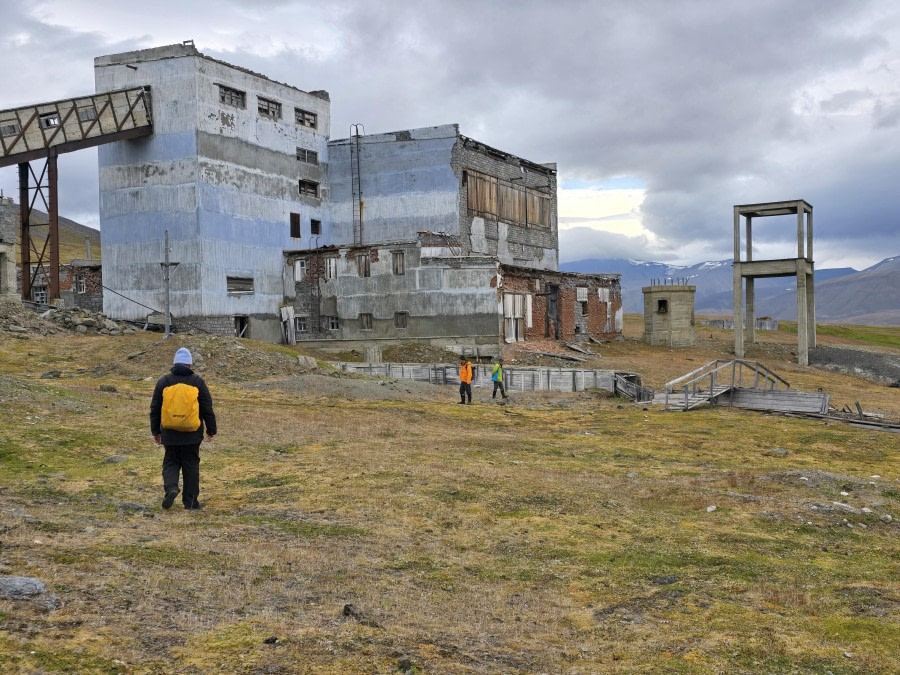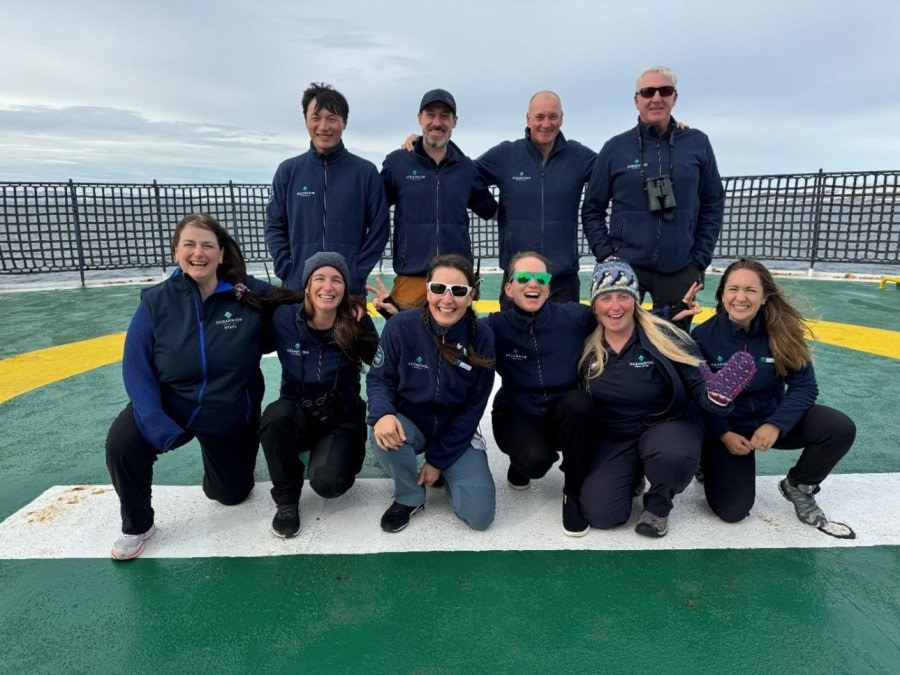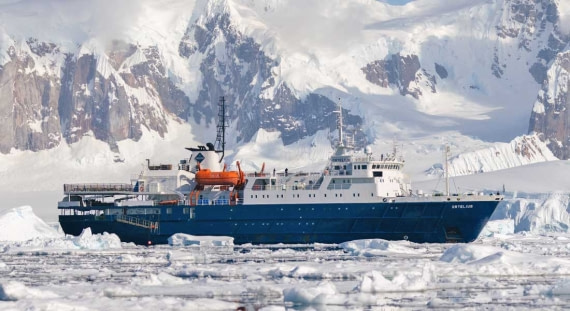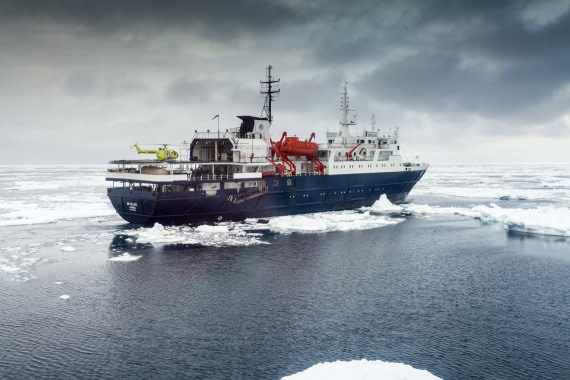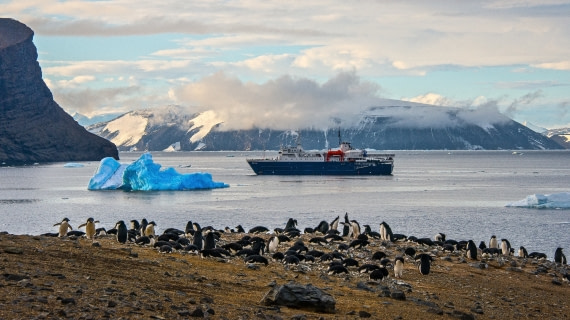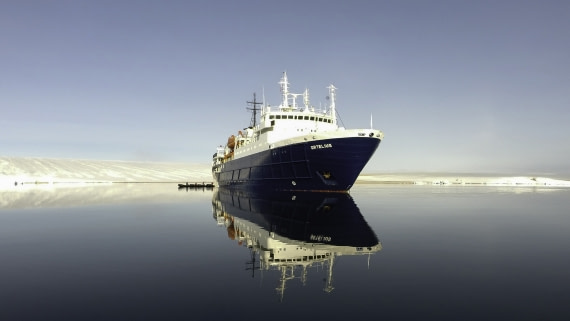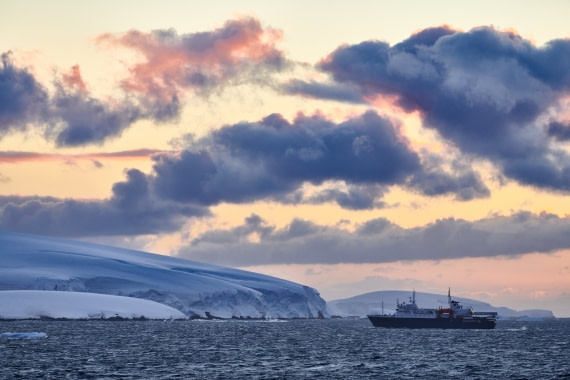| Date: |
07.08.2025 |
| Position: |
78° 17.8’ N / 013° 56.5’ E |
| Wind: |
Var 3-4 |
| Weather: |
Cloudy |
| Air Temperature: |
+11 |
This morning began as several others have during this polar bear filled trip: with a change of plans. Today’s change was not due to a polar bear sighting, however, but rather to strong winds making our original destination unsafe. We continued sailing to a bay called Ymerbukta, where we were immediately rewarded with beluga whales. A pod of at least six of the graceful white animals slowly made their way out of the bay as we waited for the guides to clear the landing site. It was a good start to the day.
Once ashore - we wandered freely within a perimeter set up by the guides. We made our way to a part of Ymerbreen that we could actually touch, not just see from a safe distance in a zodiac. The cold water dripped down the surface of the glacier in glittering rivulets, gathering at the ground into a small creek that poured silty sediments into the bay, turning the blue water brown. We could hear more water rushing down from higher up, but we could not see it; the area was quite hilly, with lots of blind dips and valleys.
As we hiked along the rocky hills, we kept our eyes open for fossils. They are quite numerous in this area, and we found shells, worm casings, and other sea life imprinted into stone. That this entire area was once the floor of the ocean seemed astonishing, especially given how high up the hills we discovered fossils. How much life have these stones seen? How many climates? How long have they been out of water, then under it, then out again? While we pondered the span of eons, gorgeous constellations of lenticular clouds brought us back to the ephemeral, as they dazzled in the far sky. The air seemed textured by them, and every moment they were slightly different than the moment before. Spectacular.
After a short Zodiac ride back to the ship, we enjoyed our last buffet lunch of the trip. As usual, it was delicious. We’re going to miss the variety of these lunches.
The afternoon saw us ashore once more, this time in Colesbukta, an abandoned Soviet coal transport station. It was here that coal was loaded onto ships to be carried back to the mainland, and there are many ruins of buildings, docks, coal chutes, bridges, etc. All are in extreme disrepair, so exploring inside any of the buildings was completely out of the question. It was heartening to see that someone was making good use of the ruins, however: dozens of Arctic terns had made their nests on and around the buildings, favoring one flat-roofed building in particular. A few fluffy chicks could be seen, their coloration already very close to that of their parents. The adults were still very watchful, more than ready to dive-bomb anyone foolish enough to stray too close to the nests. They were also very busy catching fish to feed to their rapidly growing youngsters. Their calls were loud and frequent, and it was great fun watching them.
The long hikers finally had a chance to see what a long hike was all about. After a three-hour traverse across a meadow, up a steep ridge, around a high plateau where they got great views of reindeer, and finally down another steep ridge, they were feeling the day’s events. But they all came down smiling, and (most) were glad they went. The medium hikers took a less ambitious route up a hill to find a path across a glacial moraine. When they finally found the path, it turned out to be much lower down, but some cool discoveries were made on the diversion, including a reindeer skeleton with a fully articulated spine. They explored around the ruins of the large coal processing plant, then headed up to the cemetery and a decent view of reindeer. Occasionally someone would inadvertently kick a rock and look down to see that it was actually a piece of coal. It was an odd reminder that coal, too, is a rock, albeit a flammable one.
After a long, wonderful day of hiking and exploring, we returned to the ship to get cleaned up for the Captain’s farewell. Prosecco or orange juice in hand, we toasted the Captain, the ship’s crew, the guides, and of course, our Expedition Leader, Adam. We were then treated to the slide show of our trip created by guide Gabi. What a fantastic reminder this will be of some of the things we saw and did during these ten days. (So. Many. Bears!)
As night fell, the vessel turned toward Longyearbyen, sailing quietly under the low Arctic sky, closing another chapter in the high latitudes with memories of wildlife, weather, and the deep silence of the sea.
